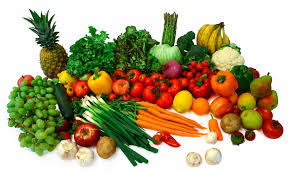Banned substances Still in U.S. foods-eating healthy?
 food, nutrition, clean eating, food labels
food, nutrition, clean eating, food labels
Most info I have learned this information from
is from an article I found intriguing By Cristina Goyanes. HERE IS A LIST OF BANNED SUBSTANCES STILL FOUND IN U.S. FOODS.
You
think the
FDA has your back? Sure, they recently proposed two new
regulations to up food safety measures, specifically how food processors
and farmers can work better to keep their fresh products free of
dangerous bacteria (remember that killer cantaloupe outbreak from
2011?). But while it may seem like the government is out to protect us
from bad—even fatal—food-borne illnesses, which cause some 3,000 deaths a
year, they don't completely have our best interest—or health—in mind.
“For
numerous suspicious and disturbing reasons, the U.S. has allowed foods
that are banned in many other developed countries into our food supply,”
says nutritionist Mira Calton who, together with her husband Jayson
Calton, Ph.D., wrote the new book
Rich Food, Poor Food due out this
February.
During a six-year expedition that took them to 100
countries on seven continents, the Caltons studied more than 150
ingredients and put together a comprehensive list of the top 13
problematic products that are forbidden by governments, outside the
U.S., due to their detrimental effects on human health.
“If you see
any of the following ingredients listed on the nutrition label, don’t
buy the product,” Calton warns. “Leaving these banned bad boys on the
shelves will speak volumes to grocery stores and food manufactures about
what informed consumers simply won’t tolerate.”
RELATED:
Eating
healthy doesn't cost as much as you think! Learn how to eat delicious,
nutritrious food without breaking the bank.
Ingredients: Coloring agents (blue 1, blue 2, yellow 5, and yellow 6)
Found In: Cake, candy, macaroni and cheese, medicines, sport drinks, soda, pet food, and cheese
Why
the U.S. Allows It: We eat with our eyes. “Recent studies have shown
that when food manufacturers left foods in their natural, often
beige-like color instead of coloring them with these chemical agents,
individuals thought they tasted bland and ate less, even when the recipe
wasn't altered,” Calton says. This may explain why the use of
artificial dyes—the most popular being red 40, yellow 5, and yellow
6—have increased five-fold since 1955.
Health Hazards: Back in the
day, food coloring came from natural sources, such as saffron and
turmeric. “Today most artificial colors are made from coal tar, which is
also used to seal-coat products to preserve and protect the shine of
industrial floors,” Carlton says. “It also appears in head lice shampoos
to kill off the small bugs.”

Ingredient: Olestra (aka Olean)
Found In: Fat-free potato chips
Why
the U.S. Allows It: Procter & Gamble Co. took a quarter century and
spent a half a billion dollars to create “light” chips that are
supposedly better for you, Calton says. They may need another half a
billion bucks to figure out how to deal with the embarrassing bathroom
side effects (including oily anal leakage) that comes with consuming
these products.
Health Hazards: “This fat substitute appears to cause
a dramatic depletion of fat-soluble vitamins and carotenoids, robbing
us of the vital micro-nutrients," Calton says, adding that many
countries, including the U.K. and Canada, have banned it.
RELATED: Satisfy a chip craving with a healthier, crunchy snack that's less than 200 calories.
Ingredient: Brominated vegetable oil (aka BVO)
Found In: Sports drinks and citrus-flavored sodas
Why
the U.S. Allows It: BVO acts as an emulsifier, preventing the flavoring
from separating and floating to the surface of beverages, Calton says.
Health
Hazards: “Because it competes with iodine for receptor sites in the
body, elevated levels of the stuff may lead to thyroid issues, such as
hypothyroidism, autoimmune disease, and cancer,” Calton says. That's not
all. BVO's main ingredient, bromine, is a poisonous chemical that is
considered both corrosive and toxic. It's been linked to major organ
system damage, birth defects, growth problems, schizophrenia, and
hearing loss, which explains why it's been nixed in more than 100
countries.
Ingredient: Potassium bromate (aka brominated flour)
Found In: Rolls, wraps, flatbread, bread crumbs, and bagel chips
Why
the U.S. Allows It: This flour-bulking agent helps strengthen dough,
reducing the amount of time needed for baking, which results in lowered
costs, Calton explains.
Health Hazards: Made with the same toxic
chemical found in BVO (bromine), this additive has been associated with
kidney and nervous system disorders as well as gastrointestinal
discomfort. “While the FDA has not banned the use of bromated flour,
they do urge bakers to voluntarily leave it out,” Calton says.
RELATED: Trying to lose weight? Be sure you don't fall for any of the top nine most popular diet myths.

Ingredient: Azodicarbonamide
Found In: Breads, frozen dinners, boxed pasta mixes, and packaged baked goods
Why
the U.S. Allows It: While most countries wait a week for flour to
naturally whiten, the American food processors prefer to use this
chemical to bleach the flour ASAP.
Health Hazards: It's not enough to
just ban this product in Singapore. You can get up to 15 years in
prison and be penalized nearly half a million dollars in fines for using
this chemical that's been linked to asthma and is primarily used in
foamed plastics, like yoga mats and sneaker soles.
Ingredients: BHA and BHT
Found In: Cereal, nut mixes, gum, butter, meat, dehydrated potatoes, and beer
Why
the U.S. Allows It: “Made from petroleum [yummy!], these waxy solids
act as preservatives to prevent food from becoming rancid and developing
objectionable odors,” Calton says. A better solution may be natural
rosemary and sage. In a 2006 study, some organic herbs and spices proved
to be efficient at preventing oxidative decay in meat, which ultimately
could improve the shelf-life of these products.
Health Hazards:
California is the only state that recognizes the U.S. National Institute
of Health's report that BHA is may be a human carcinogen, a
cancer-causing agent.
RELATED: Trade foods that contain scary ingredients linked to serious health risks for these nine tasty, additive-free products.
Ingredients: Synthetic hormones (rBGH and rBST)
Found In: Milk and dairy products
Why
the U.S. Allows It: Gotta keep moo-ving things along. Dairy farmers
inject cows with genetically-engineered cow growth hormones to boost
milk production by about 10 percent, according to Calton.
Health
Hazards: “Cows treated with these
synthetic hormones often become lame,
infertile, and suffer from inflamed and infected udders,” Calton says.
Humans, who consume these cows byproducts, are in no better shape, she
adds: “The milk is supercharged with IGF-1 (insulin growth factor -1),
which has been linked to breast, colon, and
prostate cancer.”

Ingredient: Arsenic
Found In: Poultry
Why
the U.S. Allows It: Big brother FDA permits arsenic in chicken feed to
promote growth, improve efficiency in feeding the birds, and boost
pigmentation. “The arsenic affects the blood vessels in chickens and
turkeys, causing them to appear pinker and, therefore, fresher,” Calton
says.
Health Hazards: The European Union has outlawed the use of
arsenic since 1999, Calton says, and the Environmental Protection Agency
classifies inorganic arsenic as a "human carcinogen." Take matters into
your own hands by sticking to organic birds only.
So from now on
when you read a label look for these horrible additives. I will never
feed banned foods to myself or my family/kids again, we are going to be eating healthy, nutritious food.
PEACE AND PROSPERITY BE TO YOU...
written and exerpted by : Desiree Gardner
WakeUpNow
dgardner.wakeupnow.com


